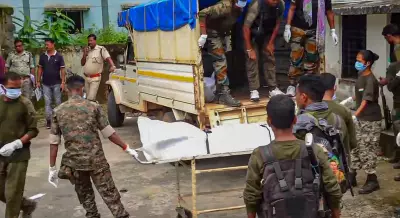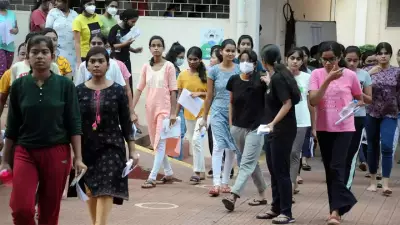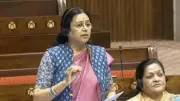Politics
3 Naxalites, Including Woman, Killed in Sukma Encounter with Security Forces
A woman among three Naxalites was killed in an encounter with security forces in Chhattisgarh's Sukma district on December 18. Police confirm the operation was based on specific intelligence.
Business
IBPS Clerk Mains Result 2025 Expected First Week of January 2026
IBPS Clerk Mains Result 2025 is expected in January 2026. Check state-wise expected cut-off marks and key dates for provisional allotment in March 2026.
World
Bangladesh Mob Kills Hindu Youth Over Blasphemy Allegation, Media Offices Attacked
A Hindu man was beaten and set on fire in Bangladesh over blasphemy claims. Violence spreads as media offices are attacked, raising global concerns over minority safety and press freedom.
Entertainment
Lalit Modi Hosts Lavish 70th Birthday Bash for Vijay Mallya in London
Former IPL chief Lalit Modi threw a high-profile 70th birthday party for Vijay Mallya at his London home. See photos and details of the exclusive celebration.
Sports
Lifestyle
Health
Viral Kickboxing Video: Army Vet's Fitness Stuns Internet
A 61-year-old retired Lieutenant Colonel's intense kickboxing routine goes viral on X, drawing playful Mahatma Gandhi comparisons. Discover the story behind the fit veteran's discipline.
Diabetes Cases Projected to Reach 900 Million by 2050
New projections warn diabetes cases could hit 900 million globally by 2050, driven by modern lifestyles. Learn the causes, impacts, and prevention strategies to combat this silent pandemic.
Delhi roads see less traffic after GRAP-4 implementation
Delhi government reports a significant reduction in vehicular movement following the imposition of GRAP-4 anti-pollution measures. Read the full impact assessment here.
Six Kids Get HIV from Tainted Blood in Satna; 3 Suspended
Madhya Pradesh govt suspends three, including blood bank in-charge, after six children contract HIV via transfusion in Satna. Read the shocking details and official action.
David Caprio's Skin Cancer Scare: A Vital Warning
David Caprio, son of Judge Frank Caprio, shares a chilling skin cancer biopsy story. Learn about skin cancer risks, types like melanoma, and crucial prevention tips to protect yourself and family.
Technology
Get Updates
Subscribe to our newsletter to receive the latest updates in your inbox!
We hate spammers and never send spam










































